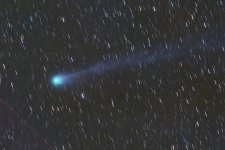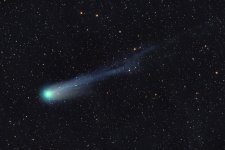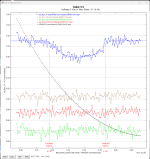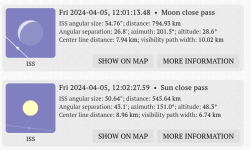You are using an out of date browser. It may not display this or other websites correctly.
You should upgrade or use an alternative browser.
You should upgrade or use an alternative browser.
Astronomy pictures thread
- Thread starter EricTheCat
- Start date
Welcome to the Precious Metals Bug Forums
Welcome to the PMBug forums - a watering hole for folks interested in gold, silver, precious metals, sound money, investing, market and economic news, central bank monetary policies, politics and more.
Why not register an account and join the discussions? When you register an account and log in, you may enjoy additional benefits including no Google ads, market data/charts, access to trade/barter with the community and much more. Registering an account is free - you have nothing to lose!
- Messages
- 153
- Reaction score
- 265
- Points
- 198
Hi Eric. I'm late to the party since the great migration, but glad I finally found this thread. That is a beautiful photo. I understand you are at a darker site now. Darkness rules in astronomy!Hope you are enjoying. Thanks for sharing.
Thanks! Glad you made it. Yeah the skies here are quite a bit darker. Been really enjoying it.Hi Eric. I'm late to the party since the great migration, but glad I finally found this thread. That is a beautiful photo. I understand you are at a darker site now. Darkness rules in astronomy!Hope you are enjoying. Thanks for sharing.
- Messages
- 434
- Reaction score
- 628
- Points
- 268
I was looking at ASIAIR but it occured to me that I had a good spare laptop for this purpose also. I just wanted to throw some money away on gear, so I bought a new $12 Acrylic Dome for my all-sky camera. This one is all scuffed up.No. Currently still using an old laptop with BackyardEOS and a long USB extension. I have begun experimenting with astroberry on a Raspberry PI 4 which I might put to use. My long term plan is to set up a relatively beefy mini PC to keep with the mount to dedicate to image acquisition.
I haven't ruled out ASIAIR but am leaning away from it.

Very cool. Eventually I'll want to get a all sky cam going here. I still have the one I had at my old place but want to get something better going since it has very low resolution over composite video. Primitive as that was it alerted me to aurora that I otherwise wouldn't have known was active.I was looking at ASIAIR but it occured to me that I had a good spare laptop for this purpose also. I just wanted to throw some money away on gear, so I bought a new $12 Acrylic Dome for my all-sky camera. This one is all scuffed up.
For meteors I mostly do stills and shoot continuous exposures. My main setup uses a Sigma 28mm f/1.4 art lens and typically run continuous 5 second exposures with the lens wide open. I can review all the frames from an entire night fairly quickly right on the camera to identify frames with meteors.Eric when you capture meteor showers do you just run a video camera constantly? I need to get tuned up before the April events.
My Canon cameras limit video recording to only 30 minutes. So if I want video of meteors with those it would mean a lot of babysitting. Then there is the logistics of identifying when meteors occurred without watching the entire video. Some people speed up the video but that still results in a lot of time to review. Others count on fireball reports to know when important events are in their videos.
I've used security cameras and had some good luck with motion detection but I have found they only capture the best and brightest and the cameras I have don't have lenses that are well suited for the purpose.
I do eventually want to get a video setup for meteors going.
Here are a couple meteors I captured Saturday morning.


- Messages
- 434
- Reaction score
- 628
- Points
- 268
My All-sky cam uses an ASI224MC which is long in the tooth. I would like to update it.Very cool. Eventually I'll want to get a all sky cam going here. I still have the one I had at my old place but want to get something better going since it has very low resolution over composite video. Primitive as that was it alerted me to aurora that I otherwise wouldn't have known was active.
Thanks Eric!
Steve
Last edited:
My initial process of Comet 12P/Pons-Brooks from last night. Showing some interesting structure but proving to be difficult to process so I will probably give that another go. Planning to set up for it again tonight if the forecast holds up.
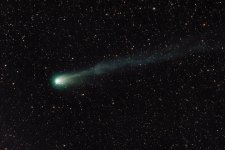
Date: 3/4/2024
Camera: Canon Rebel T8i (modified)
Telescope: 92mm f/5.5 triplet (Astrotech AT92) with focal reducer
Exposure: 34x60sec (34min total) at ISO 1600

Date: 3/4/2024
Camera: Canon Rebel T8i (modified)
Telescope: 92mm f/5.5 triplet (Astrotech AT92) with focal reducer
Exposure: 34x60sec (34min total) at ISO 1600
- Messages
- 434
- Reaction score
- 628
- Points
- 268
Wow that's excellent!!My initial process of Comet 12P/Pons-Brooks from last night. Showing some interesting structure but proving to be difficult to process so I will probably give that another go. Planning to set up for it again tonight if the forecast holds up.
View attachment 12280
Date: 3/4/2024
Camera: Canon Rebel T8i (modified)
Telescope: 92mm f/5.5 triplet (Astrotech AT92) with focal reducer
Exposure: 34x60sec (34min total) at ISO 1600
Thanks! It's a beautiful comet but of course we always wish they were brighter. It looks nice in my 11x70 binoculars but no trace of it naked eye. Would need excellent conditions at mag ~5.9.Wow that's excellent!!
Hopefully it will brighten up for the eclipse.
At it's current brightness, and assuming a clear sky, is it at all reasonable to expect it will be visible during the Eclipse? Or will it have to brighten to be visible at all?Thanks! It's a beautiful comet but of course we always wish they were brighter. It looks nice in my 11x70 binoculars but no trace of it naked eye. Would need excellent conditions at mag ~5.9.
Hopefully it will brighten up for the eclipse.
I believe it would have to brighten considerably to be visible during the eclipse. The comet will be closer to the sun and generally comets do brighten when they get closer to the sun. Impossible to predict what will happen with certainty. If I were a betting man I would bet that the comet will not brighten enough to be visible.At it's current brightness, and assuming a clear sky, is it at all reasonable to expect it will be visible during the Eclipse? Or will it have to brighten to be visible at all?
I have a strong tendency to try something I think probably won't work so I'll try getting an image of the comet with the eclipsed sun anyway unless there is strong evidence around the day of to suggest the comet won't be bright enough.
Comet 12P/Pons-Brooks with the Andromeda galaxy last night. Probably will go for the pair again in the coming nights. More data to process still and now it's time to set up for tonight! 
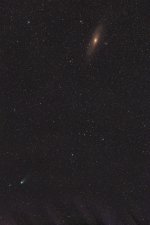
Date: 3/8/2024
Camera: Canon Rebel T8i (modified)
Lens: Canon 100-400mm zoom lens at 100mm
Exposure: 48x30 sec (24min total) at f/6.4 and ISO 3200

Date: 3/8/2024
Camera: Canon Rebel T8i (modified)
Lens: Canon 100-400mm zoom lens at 100mm
Exposure: 48x30 sec (24min total) at f/6.4 and ISO 3200
Tired of comet images yet?  Here is my telescopic image from last night. Only 16 minutes of data due to a technical issue.
Here is my telescopic image from last night. Only 16 minutes of data due to a technical issue.
Got more data tonight that I'll have to work on tomorrow.
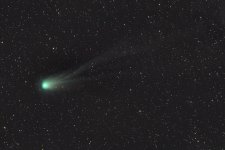
Date: 3/8/2024
Camera: Canon Rebel T8i (modified)
Telescope: 92mm f/5.5 triplet (Astrotech AT92) with focal reducer
Exposure: 16x60sec (16min total) at ISO 1600
Got more data tonight that I'll have to work on tomorrow.

Date: 3/8/2024
Camera: Canon Rebel T8i (modified)
Telescope: 92mm f/5.5 triplet (Astrotech AT92) with focal reducer
Exposure: 16x60sec (16min total) at ISO 1600
I feel confidant that everyone reading this post will agree when I say no, we are NOT tired of comet images yet and to keep 'em coming.Tired of comet images yet?
...and thank you for your effort. You do great work.
As do you too, @foolsgold . I think we've all been very impressed by both of you guy's work.
In fact, I'd be willing to bet good money that my answer is likely the only thing that everyone on the forum would be in agreement on. Lol
Here is the comet with star trails from Saturday night. Still working on the steady star version. StarXterminator decided to remove detail from the comet on this set. I found a pretty good way to get that detail back. Still have all the next steps in processing to do.

Date: 3/9/2024
Camera: Canon Rebel T8i (modified)
Telescope: 92mm f/5.5 triplet (Astrotech AT92) with focal reducer
Exposure: 34x60sec (34 min total) at ISO 1600

Date: 3/9/2024
Camera: Canon Rebel T8i (modified)
Telescope: 92mm f/5.5 triplet (Astrotech AT92) with focal reducer
Exposure: 34x60sec (34 min total) at ISO 1600
- Messages
- 434
- Reaction score
- 628
- Points
- 268
That's such a great comet.Here is the comet with star trails from Saturday night. Still working on the steady star version. StarXterminator decided to remove detail from the comet on this set. I found a pretty good way to get that detail back. Still have all the next steps in processing to do.
View attachment 12327
Date: 3/9/2024
Camera: Canon Rebel T8i (modified)
Telescope: 92mm f/5.5 triplet (Astrotech AT92) with focal reducer
Exposure: 34x60sec (34 min total) at ISO 1600
At my place I have to set up very far from my usual spot due to it being so low in the West which adds a lot of logistical challenges. Particularly having to run long extension cords to the setup and also to the laptop that I am using.My observatory is obscured from a good western view by a mountain.
The nice thing is I got a cover for the scope and there was dry weather so I was able to leave the scope outside for days.
It really is. It will be really interesting to see if it brightens more in the coming weeks. If it erupts for the eclipse that could be amazing.That's such a great comet.
That's such a great comet.
I'm counting on it.It will be really interesting to see if it brightens more in the coming weeks.
Will either of you guys get Totality at your respective locations?
I plan to travel to totality. It would be hard to miss after experiencing the 2017 eclipse.Will either of you guys get Totality at your respective locations?
Eric when you use the Sigma 28mm f/1.4 art do you shoot at F/1.4?
If so how is the vignetting?
thanks
I do shoot it wide open at f/1.4 and it does pretty good.
Some vignetting that I sometimes use ABE or DBE to help with. Star shapes aren't too bad in the corners once sized down.
I shoot with a Canon T8i which has a crop sensor (22.30mm x 14.90mm). It probably would not do as well full frame.
Single shot just screen stretched.
Single 5sec at f/1.4 and ISO 3200
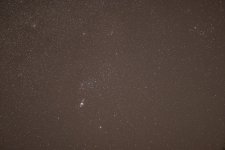
AberrationInspector to show corners, edge and middle at full res.

- Messages
- 15,769
- Reaction score
- 10,088
- Points
- 288
Found above video here:
The coronavirus lockdowns gave the world a glimpse of what could happen if our economy was suddenly shutdown. NASA has a space program called Parker Solar Probe (PSP) that aims to fly “into the outermost part of the Sun’s atmosphere, the corona, for the first time.” Why? Scientists at NASA predict an “internet apocalypse” may occur within the next year due to the uptick in the sun’s solar activity.
Penetrating the Corona – Internet Apocalypse
Posted Mar 13, 2024 By Martin Armstrong |
3min readThe coronavirus lockdowns gave the world a glimpse of what could happen if our economy was suddenly shutdown. NASA has a space program called Parker Solar Probe (PSP) that aims to fly “into the outermost part of the Sun’s atmosphere, the corona, for the first time.” Why? Scientists at NASA predict an “internet apocalypse” may occur within the next year due to the uptick in the sun’s solar activity.
Just 11 days until the eclipse. I am almost burned out already. lol
I built a home made solar filter using Baader film today that can go on my 100-400mm zoom lens. This is one of my back up plans if for some reason I need to be able to set up more quickly than setting up my telescope takes.
This is a single hand-held shot at 400mm focal length.

I built a home made solar filter using Baader film today that can go on my 100-400mm zoom lens. This is one of my back up plans if for some reason I need to be able to set up more quickly than setting up my telescope takes.
This is a single hand-held shot at 400mm focal length.

A couple home made solar filters.
This is the one I used for the above pic. This is my backup in case I can't use my telescope for some reason.

This one I made for a recently acquired 24mm lens. Yep, I added another fast Sigma art lens to my arsenal. I wanted something a touch wider than my 28mm in hopes that I can encompass Jupiter, Venus and the comet and eclipse in one frame during totality. This should serve well as an additional meteor lens in the future.
If I do this just right I can leave the lens in a fixed position and make a cool composite of the partial phases as well. I doubt I'll pull that off and it is all weather permitting but it would be cool.

This is the one I used for the above pic. This is my backup in case I can't use my telescope for some reason.

This one I made for a recently acquired 24mm lens. Yep, I added another fast Sigma art lens to my arsenal. I wanted something a touch wider than my 28mm in hopes that I can encompass Jupiter, Venus and the comet and eclipse in one frame during totality. This should serve well as an additional meteor lens in the future.
If I do this just right I can leave the lens in a fixed position and make a cool composite of the partial phases as well. I doubt I'll pull that off and it is all weather permitting but it would be cool.

chieftain
Ground Beetle
FG, remind me again why you've stopped producing astro pics worthy of a Nobel?
...
Exoplanets to be exact.
Qatar-9 b? Is there anything middle east oil money can't buy?

- Messages
- 434
- Reaction score
- 628
- Points
- 268
The Qatar Exoplanet Survey, also known as QES, is an international exoplanet search survey based in Qatar. Its main goal is to detect exoplanets using the transit method, which is observing the light curve of the host star.[1]Qatar-9 b? Is there anything middle east oil money can't buy?
History
Qatar survey has a site in New Mexico, which was a collaboration to find small planets in the northern sky.[1] Before it found its own planets, it detected WASP-36b[2] and WASP-37b.[3]Story of WASP
The first extrasolar planet around a normal star was found in 1995. The first transit of an exoplanet across its star was detected in 1999. Astronomers worldwide realised that searching for transits would be an excellent way of detecting exoplanets. This would need wide-field surveys, building up lightcurves of millions of stars, since only a small fraction of stars were thought to host planets in tight enough orbits to produce the possibility of frequently recurring transits, and only the edge-on systems would actually show transits.Hungarian Automated Telescope Network (HAT) or their discovering space observatory.
HAT-P-12 b is a gas giant exoplanet that orbits a K-type star. Its mass is 0.211 Jupiters, it takes 3.2 days to complete one orbit of its star, and is 0.0384 AU from its star. Its discovery was announced in 2009.
You get the idea.
- Messages
- 15,769
- Reaction score
- 10,088
- Points
- 288
Statewide Emergency Declared in Indiana Ahead of Solar Eclipse
Indiana Gov. Eric Holcomb issued a statewide emergency due to a large influx of visitors to his state to view the total solar eclipse on April 8.The Republican official said that the number of visitors to Indiana may strain the state’s communications, transportation, and emergency response systems, warranting the need for the declaration. Indiana includes some of the best locations in the United States to see the eclipse, according to a map of the path of totality.
“The massive number of people viewing this event in our state may well stress and/or interfere with first responder and public safety communications and emergency response systems such that a technological or other emergency may occur,” Mr. Holcomb said, adding that the declaration was issued as a precaution to bring in emergency resources from other states.

Statewide Emergency Declared in Indiana Ahead of Solar Eclipse
Indiana Gov. Eric Holcomb issued the emergency declaration as a precaution ahead of the April 8 event.
chieftain
Ground Beetle
What sort of "factory bonuses" come with an emergency declaration like that?


